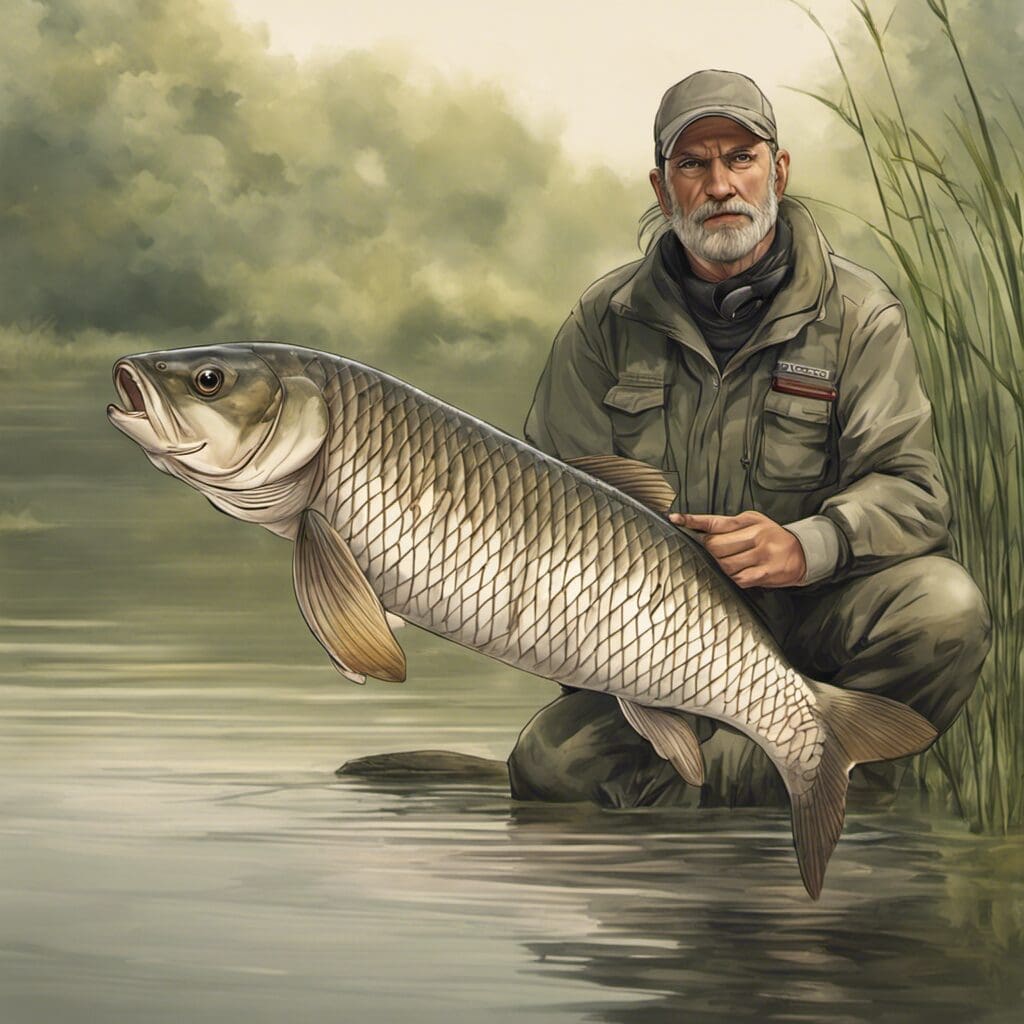Introduction
The Grass Carp, scientifically known as the “Ctenopharyngodon Idella”, belongs to the Cyprinidae family, which is also famously known for species like carps, minnows, and chubs.
Conservation Status
The Grass Carp is currently identified as a species of ‘Least Concern’ by the International Union for Conservation of Nature’s (IUCN) Red List. Efforts have been initiated in certain areas to control their populations as they can upset ecological balance due to their voracious appetite for aquatic vegetation.
Statistics
| Statistic | Average | Range |
|---|---|---|
| Length | 1 m (3.3 feet) | 0.6-1.5 m (2-5 feet) |
| Weight | 20 kg (44 lbs) | 2-45 kg (4.4-99 lbs) |
| Average Lifespan | 10 years | 5-25 years |
Distribution
Grass Carp are native to eastern Asia but have been introduced in many regions globally including Europe, North America, and Australasia. They don’t follow specific migration patterns and inhabit waters they were introduced into or born in.
Habitats
Grass Carp usually reside in slow-moving or stagnant waters, including lakes, ponds, and slower rivers. They can survive in a wide range of temperatures but thrive in warmer climates.
When and Where to See
Grass Carp can usually be spotted during summer months when the water is warmer. They can be seen either early in the morning or late in the afternoon when they come to the surface to feed.
Best Fishing Locations
- Lake Amistad, Texas, USA
- Lake Havasu, Arizona, USA
- Lake Eufaula, Oklahoma, USA
- Lake Guntersville, Alabama, USA
- The Rhone, France
- Otago Region, New Zealand
- Lake Maraboon, Queensland, Australia
How to Catch
Grass Carp prefer plant-based food and are known to take in corn, bread, or cherry tomatoes as bait. They can be caught effectively by bottom fishing and patience is often the key as they can take time to take the bait. The best time to catch them is during morning or late afternoon, particularly in the summer.
Identification Guide
Grass Carp are distinguishable by their elongated, torpedo-shaped body and silvery to olive green color. They have a unique, downward-facing mouth without barbels. They are larger in size compared to other same family species.
Culinary
Grass Carp has a unique taste with a fair amount of fishy flavor. Its meat consists of a moderate amount of fat, providing a rich taste. The fish is especially known for its abundant collagen, beneficial for skin health. Recipes include Grilled Grass Carp and Steamed Grass Carp.
Additional Information
Grass Carp are bottom dwellers who actively seek vegetation, their primary food source. They only breed under very specific conditions, making their reproduction unpredictable in many cooler regions. Predators include large birds of prey and humans. It has been introduced by humans to waters around the world for aquatic weed control.
References and Further Reading
For further information, consider visiting:

